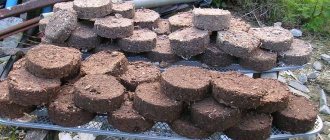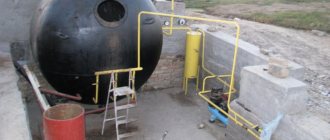Mini sword made from a nail.
Products for inventors Link to the store.
I love knives and swords, but I don't have the equipment to make a larger knife, so I started making mini swords from nails. Let's get started... Tools/materials Large nail (I used a 4" nail which worked very well) Blow torch (or something to heat the nail) Pliers (to hold the hot nail) Anvil Sander Sanding paper File Vise Polishing cream metal (optional).
Diagram and device of a machine for making nails from wire
The operating principle of the impact machine for mass production of wire nails of various sizes is very simple and clear. And therefore, mastering the use of the machine is not at all difficult. It does not require high qualifications to configure and maintain it.
Therefore, this type of equipment can be safely purchased in used condition, then its price starts from $2800. Starting at this price, you can purchase machines for making nails from wire with a diameter of up to 4 mm and a length of up to 120 mm.
Serial production of nails on your own machine is a stable source of income in the garage or at home.
Diagram of a nailing machine with a description of the operating principle
Schematic representation of the percussion device.
Wire nails are produced using impact and pressing machines. The most common impact machines are those that shape a nail using two hammers.
The wire is passed between two rows of rollers a, a. Next, it enters the feeder A (formed by the pawl b and the spring c pressing it), which oscillates with an amplitude equal to the length of the nail with a margin for forming the head. To increase/decrease the amplitude, the crank pin e is used. The feeder is driven by the crank e, the rod d, and the lever system d.
Having passed the feeder, the wire is driven between the clamping jaws w, w', and w is static, w'- is affected by the pressing force of the lever z, moved by the figured washer k (figure 14).
The cheeks are equipped with serrated grooves that allow you to fix the wire when riveting the head. There is also a shape in the cheeks that matches the geometry of the bottom of the cap.
Behind the cheeks there are knives p, p', respectively moved by levers o, o', which move under the influence of washers c and c', on the outer surface of which shaped grooves are cut (figure 14).
The knives have a pyramidal shape (figure 16). Cutout a serves to press the sharp end, blades b cut off excess. The remaining “petals” are removed during polishing.
A design feature in which the knives barely touch each other allows you to avoid rapid dulling of the knives. This design does not allow the nail to be completely cut off. The final separation of the product from the wire occurs with the help of an ejector t, the movement of which is imparted by levers y and rod f, driven by cam x.
The spring n, n' strikes the protrusion of the hammer l, giving it an impulse. The hammer strikes the nail, forming the head. A wooden spring (in some cars a steel one) is compressed using a cam m (figure 15, curve D).
The graph (Figure 15) shows the order of individual working strokes of the machine for producing nails. The feeder, which feeds the wire forward, corresponds to curve A.
The moves of the cheeks holding the wire are described by curve B (when the feeder moves the wire in the opposite direction, the cheeks do not fix it).
The working stroke of the scissors from the moment the wire is fixed is described by curve G.
The work of the ejector separating the finished product is shown by curve B.
The sequence of hammer operation is visible on curve D.
Next, the feeder occupies the extreme operating point, the cheeks open, and the work cycle begins from the beginning (curve B).
The difference between nominal and actual performance is about 20-40%. The reason for this is downtime due to the replacement and installation of tools, filling machines with new circles of wire, defects, etc. When making nails, from 2.5% to 3.5% of the material is lost on the “petals”. Losses due to defects reach up to 1%.
Pressing machines have higher productivity, but require frequent replacement of dies and jaws. High loads on the forming elements of machine tools lead to their rapid wear.
Pressing machines are designed in a similar way, but instead of a hammer, they have a stamp that forms the head of the nail with gradual pressure. The stamp is driven by a figured washer or an eccentric.
In the opposite direction, the wire is fed forcibly (unlike impact machines, where it occurs under the action of a spring). This design increases productivity by almost 2 times.
In pressing machines, production waste constitutes about 3% of the weight of the wire used. These are “petals” and marriage.
Nail production: equipment and popular technologies
The production of nails is one of those areas where large production capacities and technological equipment are not needed to organize a profitable business. At the same time, the product is in demand in the construction market, the scope of application is huge and this simple product does not need advertising.
Nails are one of the most used types of fasteners, so it’s difficult to stay here without a buyer.
Nails as a product are a very simple subject, especially when it comes to their most common types - round construction nails, wallpaper, slate, and so on. Making dowel-nails is a more complex process; it will require special equipment and a more complex production line.
For most types of products, the production technology turns out to be very similar.
- The basis for them is wire of different sections and from different materials. The wire is offered in spools, so the first stage of production consists of unwinding and straightening the material.
- Then the wire goes to a roller straightening device - these are 2 teeth fixed into mandrels. The chisels grab the wire and push it into the impact structure of the nailing machine.
- The nailing machine cuts blanks to specified sizes. To do this, the wire is inserted into the impact device until it stops, clamped and cut off. During the reverse movement, the workpiece is released and held by the sleeve. A cap will be formed on the workpiece in place of the cut fragment. The impact device returns to its original position.
- Formation of the cap, production of notches and points - the heads are obtained using 2 semicircular disks with grooves. When formed, the clamping device secures the discs so that the grooves face each other, forming a round hole. Due to this, notches are formed on the head. The sharp end of the nail with a point angle of no more than 40 degrees is formed automatically due to the design of the pliers.
- Finished products are dumped into a bunker, sent to a warehouse and packaged.
The production of different types excludes some operations - for example, a machine nail does not have a point, or includes additional ones - applying a protective layer of zinc, copper, brass, but the general technological scheme remains unchanged.
The video below discusses the nail production technology:
To manufacture products you will need premises, raw materials and a production base. All 3 components are quite accessible, since the production process does not require any special conditions - pressure, humidity, or complex technological operations.
Raw materials
The vast majority of nails are made from low-carbon steel grade St. 1, Art. 2, Art. 3, Art. 5, Art. 10, Art. 15.
The material is manufactured at any metal rolling plant and is regulated by GOST 3283-74 wire parameters. Wire is supplied in reels weighing from 0.7 to 1.8 tons.
The latter matters not only for the cost of the material, but also for the equipment: if the reel is heavy, you will have to purchase a more solid unwinding machine.
The price varies quite widely - from 24 to 35 thousand rubles. per ton, as it is determined by the nature of the material and the diameter of the wire for the production of nails.
- For example, you can use regular steel wire to make galvanized nails and then coat the finished product with zinc. You can do otherwise and purchase galvanized wire. In this case, the raw materials will be more expensive, but due to the absence of such an energy-intensive stage as galvanizing, the production itself will be cheaper. The choice here depends on the supplier.
- To produce hardened nails, you will need high-carbon steel that has undergone heat treatment. This type of raw material is much more expensive, and the production of nails is not cheap. Conventional hardened nails are just a by-product, as their scope of application is limited.
Control of raw materials is very important. It is necessary to organize a check not only of the weight of the reel, but also of the characteristics of the wire: color, steel grade, etc.
Another nuance is the container. As a rule, finished nails are packaged in cardboard boxes, and the products are poured into boxes at the last stage of production.
We’ll talk about the equipment for producing nails and its price below.
Equipment
A mini-shop for the production of nails can be opened even in an ordinary garage, the corresponding equipment is so compact. The simplest production line consists of 2 modules.
- Telpher – a device for unwinding a bobbin. The simplest manual device with a lifting capacity of up to 2 tons costs about 20 thousand rubles. and is considered sufficient for small production. Automatic will cost more.
- Wire nailing machine or machine (or mini-machine for the production of nails) - a wide variety of devices, manual and multifunctional, are produced. Here the choice depends on the volume of expected production and the type of nails. In order not to be mistaken when considering options, the following factors are taken into account: power - ranges from 3 to 20 kW, which is decisive for the volume of finished products;
- the ability to produce nails of different lengths - from 12 to 32 mm;
- ability to work with wire of different diameters - from 1.2 to 9 mm. This option significantly expands the range;
- production speed – on average ranges from 100 to 600 products per minute;
- adjusting the diameter of the head allows you to produce different types of nails - finishing, construction, roofing felt, and so on;
- weight – this matters when choosing a room. A device weighing 0.7 tons can be placed in a garage, but a device weighing 2 tons will require a solid concrete foundation.
A special module will also be required if the finished products are coated with an additional layer - brass, copper, zinc. When production volumes are large enough, it turns out to be more profitable to galvanize products on site than to use ready-made wire.
The price of a nail production machine depends on all of the above factors, as well as on the country of origin. Taiwanese products are considered optimal today.
The price range is very wide - from 350 thousand rubles. up to 900 thousand rubles Used equipment can be purchased at a much lower price - from 120 thousand rubles.
You can also try to make a machine for making nails with your own hands.
Now you know how much a machine for producing nails costs, then you will find a business plan model for production, which, according to reviews, is the most acceptable.
This video will tell you what a nail making machine is:
Judging by reviews from manufacturers in this area, the complexity of organizing an enterprise is average. Most of the difficulties are not related to the equipment and installation of the industrial line itself, but to documentation and registration. The latter is mandatory, since wholesale buyers do not agree to cooperate with enterprises that are not registered.
Necessary
Setting up a business will require a fairly simple sequence of actions.
- Product Selection – There are many types of nails, and to develop a plan it is important to know which products you intend to produce. The nature of the raw materials, the power of the machine, and the capabilities of the technological line for the production of nails depend on this.
- Registration of a form of management - there is little choice here: a private entrepreneur or a limited liability company. You also need to choose a taxation system. The most common choice is the simplified tax system, that is, 15% of the profit. In this matter, you will need to consult a lawyer.
- Choosing a room - the requirements for it are minimal. For placement and maintenance of 1 nailing machine it will require 15–20 sq. m. The second condition is high-quality electrical wiring. Most devices require a 380 V network to operate. Additional space is also needed for storing raw materials and storing products.
- Purchase of equipment corresponding to the project.
- Hiring personnel – one trained person is enough to operate the machine. Preference is given to physically strong people: such work requires physical effort.
- Searching for buyers - the best option is wholesale buyers, especially permanent ones: construction companies, hardware stores, wholesale centers, furniture manufacturing enterprises, and so on. The search is carried out using different methods: from advertising in the media to “cold calls”.
The profitability of the nail production business is determined by the demand for products in a given region and the cost of raw materials. Despite the average occupancy of the market, competition here is quite high.
The initial estimate includes the following costs:
- the cost of equipment depends on the power and functionality of the devices, their quantity and variety of assortments. You can reduce costs by purchasing used machines. On average, the figure will be 400–550 thousand rubles;
- rental of premises - depends on the region, but, as a rule, fits into 15 thousand rubles. per month;
- purchase of raw materials – including containers. The amount depends on the nature of the material, usually 25–35 thousand rubles. per ton;
- business registration;
- payment for staff work.
The average payback period is 6 months. In practice, everything depends on established sales. Provided that all products are sold and the workshop productivity is 4.0–4.5 tons per month, the initial costs can be recouped in a year, which means the profitability of the enterprise will be 29%.
The production of nails is a fairly promising option for small and medium-sized businesses, since this type of fastener is always in demand on the market. However, the success of an enterprise is determined not only by the type of product, but also by demand in the region and the cost of raw materials.
A business plan for the production of nails is discussed in this video:
List of main technical characteristics
General scheme of equipment operation
The next step is to determine the required technical and operational qualities of the machine. The defining indicator of nailing equipment is its productivity, i.e. speed of production of finished products by the machine. But in addition to this, a number of other factors should be taken into account.
The drive of all moving mechanisms is often carried out through cam units. They are connected to the electric motor. The speed of operations, as well as the maximum diameter of the steel workpiece, depends on it. Setting up the equipment is carried out by adjusting the wire feed units, setting the force of the impact mechanism to form the nail head. In this way, you can set the operating frequency of all machine mechanisms.
Main technical characteristics of equipment for making nails:
- maximum and minimum diameter of the rod;
- limits for changing the length of the workpiece;
- performance;
- weight and dimensions of equipment;
- power consumption of the electric motor.
The diameter of the finished nail head depends on the cross-section of the wire. The impact mechanism has a standard size. During the production process, you can only change the amount of force exerted on the workpiece.
The advantage of modern nail production machines is the almost complete automation of their operation. It is important to correctly configure the primary parameters and timely feed the wire into the gripping unit of the machine.
nail shop
Blacksmith's nail shop. Photo ForgingPRO
For the production of forged nails, a nailing device is used. With its help, a thickened nail head is made. Formation occurs in the cavity of the nail body, which acts as a stamping matrix or by riveting on the surface. Further shaping is carried out using an overlay matrix (“top”).
Differences between a manual nailer and a nail plate
The nailer is manufactured as a separate mold on the handle (manual nailer) or as a steel plate with many form-building cavities of different sizes (nail plate).
The nail plate is used in blacksmith shops, where the production of forged nails of various sizes is part of the specialization of this production.
Forged nails, for example, can be used in the manufacture of furniture with elements of antique decor.
Nail plates are installed on an anvil , ensuring the possibility of overturning when knocking out finished nails.
Manual blacksmith nailer. Photo ForgingPRO
Manual nailers are used to fulfill one-time orders; they can be placed anywhere in the blacksmith’s workshop, including a workbench drawer.
How to make a nail forge for a forge
To carry out work on the production of forged nails, rivets and blanks for bolts, the equipment can be done by hand.
Manual
There are many manufacturing options depending on local conditions. Here we will describe one of the possible options.
You will need an anvil to make your own blacksmith nail. Photos Stankocentr
To perform the work you will need the following materials, equipment and accessories :
- metal rod with a diameter of 30-40 mm;
- low carbon steel rod with a diameter of 6 mm. for handle;
- spring steel rod (old car suspension spring);
- hand blacksmith fork;
- stationary forging fork;
- blacksmith's pliers;
- cup-shaped backing tool;
- blacksmith chisel;
- hand forging hammers;
- anvil;
- universal locksmith tool;
- forge forge for heating workpieces;
- air hammer;
- universal grinder (grinder);
- welding machine.
The procedure for performing actions in the manufacture of a manual nailer.
- Using a grinder, the required length of spring steel .
- Using stationary and manual forks, forging tongs and a hammer, the heated wire is aligned . This will be a blank for making firmware.
- We use hot forging technology to produce firmware . The firmware is a tetrahedron in the form of a pyramid. We cut off the finished firmware from the rod using a forge chisel.
- the mold for making nails using hot forging using a pneumatic hammer . A cup-shaped backing tool produces a groove on the side surface of the mold cylinder.
Grinder Bosch GWS 850 CE. Photo 220Volt
- The grinder removes irregularities inside the groove , obtained during shaping using the hot forging method. Cleaning is carried out using metalwork tools. A circle bent from wire with a diameter of 6 mm should fit into the groove.
- The hole for the firmware is marked and punched . Using a drill whose diameter is equal to the maximum size of the side of the firmware square, a hole is made along the markings.
- In a heated mold, using impact piercing, a tetrahedral cavity is cut . Cutting is done from the back side of the working part of the mold.
- The handle consists of two parts : a round part that fits tightly into the groove on the form and the holder itself, bent from the same rod with a diameter of 6 mm. Both parts are connected to each other by a weld.
Brief description of the work: a forged rod for riveting the head is inserted into the mold until it stops. An allowance for riveting the head is marked and the required size is cut off on a forging chisel. After the technological operation, the workpiece is freely knocked out with blows from the reverse side (the tetrahedral hole is larger here).
Stove
To make a nail plate, the most important point will be to find the necessary blank . must be hard after hardening . Mark the slab according to the number of standard sizes produced. To shape each of the holes, you can use the technology described for a manual nailer.
Tools for working with nails
From the description of the manufacturing technology of the nail house, as well as the forged nails themselves, it is clear that the work is impossible without the use of other blacksmith tools: forge, anvil, forks, hammers, sledgehammers, tongs and various auxiliary devices.
Hand forged fork. Photo ForgingPRO
- A forge is a device where heating occurs to a temperature that ensures deformation of the workpiece during hot forging operations.
- The anvil is the main working tool-device for performing forging operations.
- Hammers are designed for manual impact work directly involved in the shaping of small workpieces.
- A sledgehammer, having a heavy head, is used to deliver blows of much greater force than conventional hammers.
- Hand forks and forks in blacksmithing are mandatory participants in all bending operations.
- Pincers are used to hold heated workpieces during hot forging operations. The working part of the pliers is made in accordance with the shape of the workpieces.
- Chisels are used to perform parting operations.
All blacksmithing accessories are made by hand, provided the appropriate material is available.
The pliers are made from rolled steel that is not hardened. Constant heating and cooling should not affect the structure of the material.
A fork can be welded from pieces of corner and scrap metal.
For the heads of hammers and sledgehammers, use steel grades 40X, 45 for forging the working part.
An anvil at home is made from a piece of rail or channel.
The forge includes many DIY options. It can be simple, made of brickwork, or quite complex, consisting of a metal structure with the organization of blowing to obtain a higher heating temperature.
Where can I buy
On our website, a separate section contains companies that offer to buy nail shops. Here you can familiarize yourself with the characteristics of the product and estimate the purchase price. The site also offers for consideration companies that produce and sell other types of forging tools necessary for the production of forged products: chisels, hammers, pliers.
Sections: Tool, Tool
Do-it-yourself nail production machine - Metalworker's Guide
To get a decent profit, it is not at all necessary to organize a technically complex production with large capacities and high-tech equipment.
There are also areas of activity that do not require large capital investments from the entrepreneur, but with products that are in great demand on the market. Without a doubt, we will include this as a nail manufacturing workshop.
If you buy a machine for producing good quality nails, you can start a business literally at home.
Fastening materials do not require advertising, the sales market is huge, the technology is extremely simple, the devices are relatively inexpensive - all this makes this line of business very promising.
Our business assessment:
Starting investment – 400,000 rubles.
Market saturation is average.
The difficulty of starting a business is 5/10.
What nuances does a businessman need to think through before opening a mini production of nails in Russia? Despite the fact that a small workshop is planned, there is a lot of work ahead.
Registration of a future enterprise
It is unlikely that any wholesale client will cooperate with a company that is not officially registered. Therefore, first of all, we set off to officially register our workshop. The IP form may well be suitable for a mini-factory.
Due to lack of time, the collection of documents and permits can be entrusted to a qualified lawyer.
GOST does not impose any special requirements for organizing a workshop for the production of fasteners, and therefore it should not take a lot of time and money to collect the necessary documents.
Nail manufacturing technology
The production of nails as a business is especially good because the technological process of production is extremely simple. In addition, all stages are performed on special equipment.
And this saves a lot of money for the entrepreneur, since there is no need to hire highly qualified personnel.
If you wish, you can train workers to operate the machine yourself.
The technology for making nails is as follows:
- The wire unwinds from the reel and enters the machine.
- The wire is cut in accordance with the specified parameters.
- At the other end, through a blow, a cap is formed.
The technology may differ slightly depending on what product is planned to be produced. For example, the production of galvanized nails implies the presence of one more stage - galvanization.
But it can also be omitted, since it is possible to immediately purchase ready-to-use raw materials - galvanized wire. And this is sometimes more economically profitable, because it does not require additional equipment in the workshop.
Purchase of quality raw materials
Having understood all the nuances of the technology, you can begin to search for suppliers of raw materials. And this is a very important stage in organizing a business, since the quality of the finished product will depend on the quality of the raw materials. And the main component here is steel wire.
Wire for the production of nails is usually supplied to workshops in the form of large coils of 500 kg each. There are also larger reels weighing up to 1.8 tons.
And the exact form in which to purchase wire will depend on the equipment purchased, since not every device can “handle” the large weight of the skein.
The cost of the wire will depend on its type and the pricing policy of the specific supplier. On average, the price range ranges from 25,000 rubles. up to 35,000 rub. per ton.
In order for a nail production plant to produce only high-quality products, it is important to organize careful incoming control of raw materials at the enterprise.
Here the compliance of the actual parameters (skein weight, color, brand) of the wire with those specified in the accompanying documentation is monitored.
And good raw materials will not only be the key to producing a high-quality product, but will also save equipment from premature wear.
In addition to wire, the workshop needs to arrange supplies of wooden containers - boxes. Finished products will be poured here during the manufacturing process. And right in these boxes, finished products can be supplied to wholesale customers.
Workshop technical equipment
There should not be any problems with the technical equipment of the workshop, since there are a lot of offers for equipment on the market today - from the cheapest manual machines to entire production lines. And how much a mini machine for making nails with your own hands costs will depend on the power of the device, brand, configuration and degree of automation.
An entrepreneur can choose machines of both foreign and domestic production.
And it is impossible to say unequivocally which option is better here, since in terms of the technical component they are very similar. The main difference is the price.
But is it worth overpaying for foreign devices if they work with the same raw materials and the same technology?
Automatic machine for the production of nails
Since almost every nail production line is equipped in the same way, when choosing suitable machines it is better to pay attention to their individual characteristics:
- The speed of obtaining the finished product is of great importance.
- It’s good if the machine can work with wire of different diameters - 1.2-2 mm.
- Obtaining nails with different shaft lengths (15-60 mm) will expand the range of products.
- If it is possible to adjust the diameter of the nail head, it will be possible to obtain products for various purposes.
The issue of the cost of technical equipment in many cases will be decisive in the choice. And this business is also good because the price of equipment for the production of nails varies over a wide range.
Completely manual equipment, which can easily fit in an ordinary garage, will cost the entrepreneur no more than 400,000 rubles. But if we talk about more powerful machines, then for such equipment you will have to pay much more - up to 1,000,000 rubles.
For example, the AG4116 machine, which is popular today with average productivity, costs ≈700,000 rubles.
And if the available money is not enough for even the cheapest equipment, then you can think about purchasing used equipment for the production of nails. This will save you a lot of money - practically new devices can be bought 2-3 times cheaper.
Modern automatic nail release machines are very easy to operate, and therefore you can start a business even without outside help - with small volumes of production, even one person can handle servicing the equipment.
Taking into account the fact that in the process of manufacturing finished products, huge spools of wire are used, it is advisable to supplement the automatic nail production machine with an electric or manual forklift. This equipment will greatly facilitate the process. A manual lever hoist (with a load capacity of up to 2 tons) can be bought for about 20,000 rubles. – it will be quite enough for a small workshop.
Problems of selling finished products
It’s great if, even at the stage of business planning, an entrepreneur evaluates the competition in the regional sales market. This will help in the future to plan the enterprise development strategy and customer search plan.
As in many other manufacturing areas, in this niche we rely on wholesale buyers. Even a low-power machine will produce large volumes of products that private individuals simply will not buy up.
It is absolutely clear that the price of a machine for producing nails will pay off the faster the sooner contracts for the supply of finished products are concluded. Potential wholesale consumers:
- furniture factories,
- construction companies,
- construction bases and shops.
Surely, large companies are already cooperating with someone, which means that it will not be easy to win them over to your side, only if you reduce the price of the product.
And let the entrepreneur lose a little profit here, but this will allow him to immediately ship the manufactured products.
With the development of the workshop, prices for products can be raised, covering new markets.
Since our target is wholesalers, there is no point in launching a large-scale advertising campaign. But you can still make yourself known - advertisements in newspapers and the Internet, articles in specialized magazines.
We recommend reading:
What and where to buy a machine for making self-tapping screws?
Business idea: production of dowels.
How to open a mini plant for the production of composite reinforcement?
How profitable is the nail making business?
Every business plan for the production of nails, even if we are talking about organizing a home business, must contain a section proving the profitability of the planned workshop.
But before we talk about profits, it is necessary to calculate capital costs. And here everything depends on specific conditions - the cost of equipment, the availability of production premises, the terms of the contract for the supply of raw materials. On average, 1,000,000 rubles will be enough to organize a full-fledged workshop.
This will include the following expense items:
- Purchase of medium power machines (≈350pcs/min) and their commissioning.
- Rent a small room.
- Providing a raw material base.
- Official registration of the workshop.
But if you purchase used equipment and install it in your own garage, then the entrance ticket to this niche will cost no more than 400,000 rubles.











